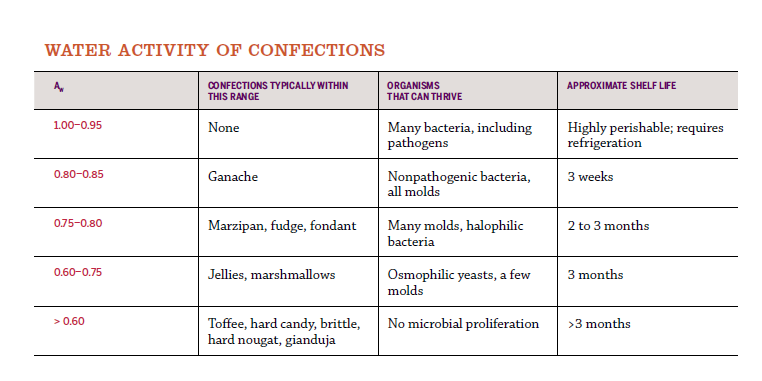18 minutes ago, Jim D. said:
Have you read this series of posts on shelf life? And there are many other threads dealing with the issue. Unless you are going to tell recipients to eat the chocolates within a day or two at the most--and be fairly certain they will follow your instructions--you definitely do have to pay attention to how "aqueous" they are. The only way to know for sure is to use an Aw meter, which measures the available water content. Basically it comes down to increasing the solids and decreasing the liquids in a filling. It is sometimes (maybe always) necessary to juggle how "luscious" your filling is vs. how soon it will mold. In the case of pâte de fruit, which has a higher Aw reading than one might assume, I add some pulverized dried fruit to the fruit purée. Not only does that "punch up" the fruit flavor, but it also lowers the Aw significantly.
Yeah, I've gone through a few Aw posts, I was just wondering if there were any rules of thumb to be followed to give a rough idea about where you're at with regard to water activity. Things you can control for reasonably well, like maybe ratios of water to glucose syrup to get to particular Aw values. Or maybe charts for common ingredient combinations and ratios leading to a particular Aw. I know there's some software out there, but that, along with the Aw meter, is out of my teeny-tiny hobbyist budget. I haven't even gotten around to figuring out which chocolates I'm going to get ![]()
Guess I'll just have to follow prewritten recipes for now! I assume most of the formulas in Greweling's book are stable for at least a week or two. I wish he included Aw along with each recipe. He does provide this graphic, however, which is somewhat useful: 



